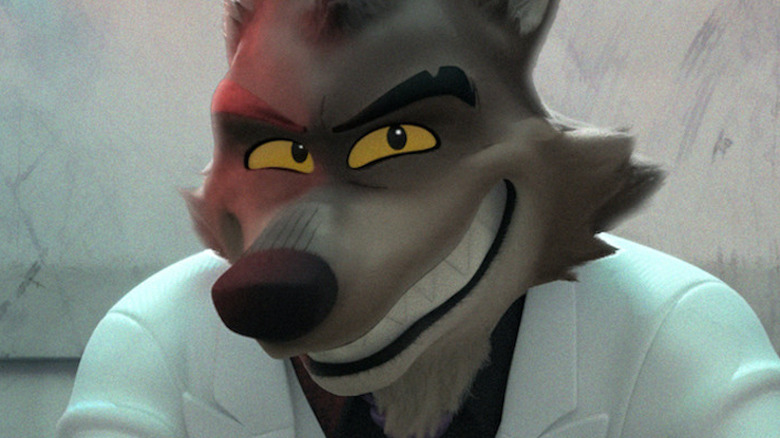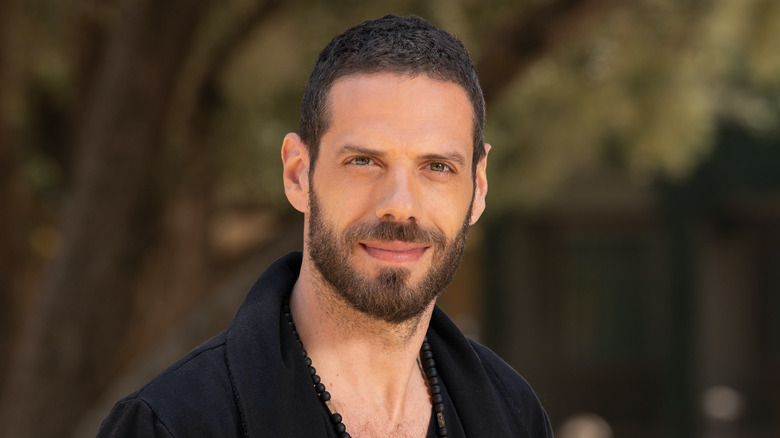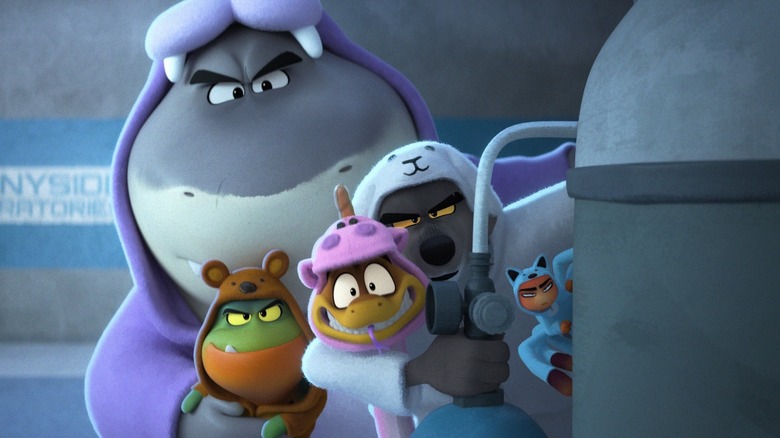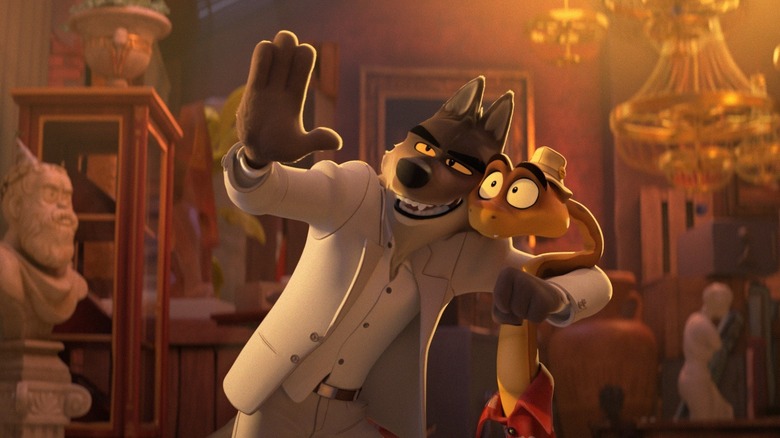The Bad Guys Director Pierre Perifel Reflects On His Film's Message, Humor, And Animation - Exclusive Interview
The computer-animated film "The Bad Guys," based on the book series by Aaron Blabey, imagines a world where animals and anthropomorphic animals live side by side. There are still some things that never change, including the bad habits of scary animals: The title team, the most notorious gang of criminals in the city, consists of some of the most terrifying animals known, and their villainous activities ensure they live up to their species' bad reputations. When the Bad Guys are finally caught, Mr. Wolf (Sam Rockwell), Mr. Snake (Marc Maron), Mr. Shark (Craig Robinson), Mr. Piranha (Anthony Ramos), and Ms. Spider (Awkwafina) are given an opportunity to earn their freedom — if they can go good.
The movie includes valuable messages about the dangers of buying into stereotypes and the benefits of embracing change, and first-time feature director Pierre Perifel has wrapped them in a fun, funny, and beautifully animated package. Perifel, an accomplished animator for popular films like "Kung Fu Panda," "Monsters vs. Aliens," and "Shrek Forever After," has made a film that will entertain the whole family, with a unique style and tone that ensures it's a stand-out entry in DreamWorks Animation's acclaimed canon.
In an exclusive interview, Perifel discussed the message behind "The Bad Guys," how he and the filmmaking team incorporated plenty of clever and hilarious humor into the movie, and how he arrived at the film's distinctive visual style.
A story full of important themes
The story of "The Bad Guys" deals with stereotypes and whether people can change. What were you hoping to convey through the movie?
You're absolutely right. The basic theme would be, "Don't judge a book by its cover." To me, it's all about: Look a little bit behind the curtain before judging someone and know what you're judging — first of all, judgments are never great – but there's always room for a second chance, room for redemption on anyone. You're not branded a bad guy because you do something bad. If you can correct this, if you can change, [and] therefore, you're a flawed human that can learn.
It's a theme that we need to really embrace and kids need to understand. It's not because you do something wrong that you are a bad person. If you can correct it, if you realize you did something wrong, correct it, then your actions speak for yourself. It's okay. We are redeemable, and that's very important for kids, at least. You're not defined by one action or what you're born like or what you look like. It's much bigger than this and it's much more optimistic than that.
Finding the funny
The story is really meaningful because of that, but it's also really funny. How did you work that humor into the story, while also conveying those important themes?
We got lucky because we're working from a source material. The books are very funny. [Writer of "The Bad Guy" books] Aaron [Blabey]'s humor is super witty and a little edgy in a great way for children. He uses words, but also fonts and [graphics] to convey that, and silly posing and the timing in the page is great. We had a lot of material to feed off of, and Etan Cohen, the writer of the movie, took this and really rolled with it, and he had really quickly defined the characters so clearly in their voices. He was able to bring that idea of breaking the fourth wall and that banter between the characters.
When we started working the script and bringing that idea of a whole heist genre, all the tropes of that genre fed into the humor as well. How do you take those tropes, but subvert them, so they become funny? When there is an incident during a heist, what could that be? Well, what if Shark is pretending to be pregnant? [Those are] some jokes that were brought in by some story artists, by the story team, that was not even scripted, but then when you see that in drawing it's so funny to see that. It really ties into it.
What works well in this movie, and [what] I'm super happy with, is that parallel between sophistication in the plot and the twists and the heist genre and the dialogue and the goofiness of the visuals and some of those jokes. That combination, to me, is great because it pleases the adults as well as the children in a fantastic way. It's really funny for that reason.
A stylized, painterly animation style
The animation has a unique that's specific to this project. How did you arrive at that style?
It's my own influences, growing up in France and being an avid image collector — not just images, cinema and animation — I love that [and] French graphic novels. [I was] also very much influenced by the anime world and the manga world, [and] clearly there is a big cross pollination between the French school and the Japanese school. We grew up with that, clearly, and wanted to bring that over.
I'm classically trained in terms of drawing and illustration and animation, and I wanted to see CG being a bit more stylized than what we tend to see over and over and over, where it's a realistic rendering and the same style of character designs that DreamWorks, and Disney, and Pixar, and Illumination have. We've all been doing that for so long now and I feel like we needed something a bit different. You could see that it's also a trend that's growing, starting with "[Spider-Man: Into the] Spider-Verse," , but "The Mitchells [vs. the Machines]" did that and we're doing that.
The idea was to get an image that feels a bit more illustrated, a bit simpler to look at, a bit more stylized with layers of 2D animation, and a stylized look, painterly textures, and some line work in there. The race for photorealism in the CG world is over. We reached it, except for the [visual effects] companies who are doing effects for live-action movies, but for the feature animation or TV animation products, what's the point anymore? We can go and really try to dive into different looks and styles.
"The Bad Guys" premieres exclusively in theaters April 22.



